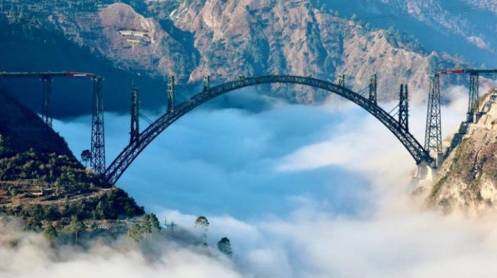The Chenab River is rapidly transforming into India’s hydroelectric power corridor, with over 70 hydropower projects in various stages of development. The electricity generated from these projects is expected to surpass the combined output of Pakistan’s Mangla and Tarbela dams.
India has already completed 11 dams on the Chenab River, including the Salal and Baglihar Dams. Recently, construction has begun on two new controversial hydropower projects—Keeru (624 MW) and Kwar (540 MW)—both of which violate provisions of the Indus Waters Treaty (IWT).
Currently, 24 more dams are under construction on the Chenab, with an additional 190 projects in the pipeline, undergoing feasibility studies or approval by India’s Lok Sabha and Cabinet Committee.
India’s Central Water Commission recently observed increased water flow in the Chenab, attributed to glacial melting due to climate change. This additional water supply has increased the operational capacity of new hydropower plants in Indian-occupied Kashmir by 25%. However, Pakistan is receiving less and less water at the Marala headworks annually.
Disruption of Chenab’s Natural Flow
Before the Indus Waters Treaty in 1960, the Chenab brought approximately 26 million acre-feet of water to Pakistan annually. However, with India’s extensive hydroelectric developments, the river’s natural flow has diminished significantly, raising concerns about its ecological and social impact.
The Chenab, spanning a relatively short length of 500-600 kilometers in India, is now heavily regulated. In Himachal Pradesh alone, over 50 hydropower plants are being built within a mere 100-kilometer stretch, averaging one plant every two kilometers. In Jammu and Kashmir, larger dams are under construction, with a combined electricity generation capacity of 9,000 MW—equivalent to Pakistan’s entire hydropower output.
The Keeru hydropower project (540 MW), located near the villages of Patnaki and Keeru, and about 42 km from Kishtwar, involves a 135-meter-tall concrete gravity dam. Similarly, the 624 MW Kwar project, built under the run-of-river scheme, is expected to commence electricity generation by 2025.
Pakistan’s Concerns
While Pakistan does not oppose run-of-river projects in principle, it objects to India’s excessive water storage capacities, which exceed treaty limits and restrict downstream flow. Furthermore, India’s designs often lack critical low-level outlets and feature elevated spillways, further obstructing water flow to Pakistan.
Under the IWT, Pakistan has the right to review project designs, but India often delays or provides incomplete information, leaving Pakistan with insufficient time to respond. Moreover, Indian authorities deny Pakistani inspection visits before or during project construction, another violation of treaty clauses.
India’s Stance
India dismisses Pakistan’s objections as baseless, arguing that its projects generate electricity without diverting the Chenab’s flow. It claims that natural geographical barriers, such as the Pir Panjal mountain range, make it technically infeasible to redirect the river’s water elsewhere.
However, advancements in tunneling technology now allow water to be routed beneath the Pir Panjal range. While expensive, this option is technically viable, making Pakistan’s vigilance over its water rights all the more critical.
The Way Forward
Remaining silent on India’s hydropower projects risks forfeiting Pakistan’s rightful share of the Chenab’s water. Pakistan must expedite the development of its remaining water resources and assert its treaty rights. Strong diplomatic efforts and technical countermeasures are essential to safeguard its water and energy security.
Story by Zafar Watto







